#18th century erasure
A strange phenomenon I’ve observed
So I’ve increasingly noticed that when people think of the fashion of a specific dynasty/era, for some godforsaken reason the image that pops into their head is always the fashion of the era that immediately succeeds it?? It’s never the preceding era either, just always exactly the era that came right after. It confuses me immensely. Some common examples are:
- 18th century Qing fashion being mislabelled as Ming
- 1920s Han hairstyles and early 20th century Manchu fashion in general being mislabelled as Qing
- 1950s cheongsam being mislabelled as Republican era
- Ladies with Hair Flowers being used as Tang Dynasty fashion resource, despite it being made after that (I’m not even interested in the Tang yet I know about this, it’s weirdly prevalent)
Pictorial evidence:

Painting from the book 古代风俗百图 by 王弘力. It’s labelled Ming but the grown ups are wearing obvious early 18th century (Qing) fashion.

Qianlong era (ca. 1750s) artwork from series 燕寝怡情图册.
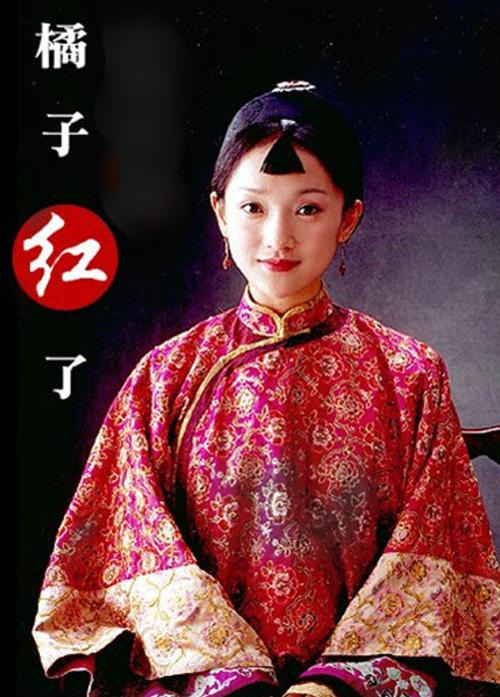
Influential styling from the movie 橘子红了. It’s set in the Qing Dynasty but the hair and clothing look 1920s (Republican era).

1920s artwork.

Illustration showing “Republican era” cheongsam by artist 末春.
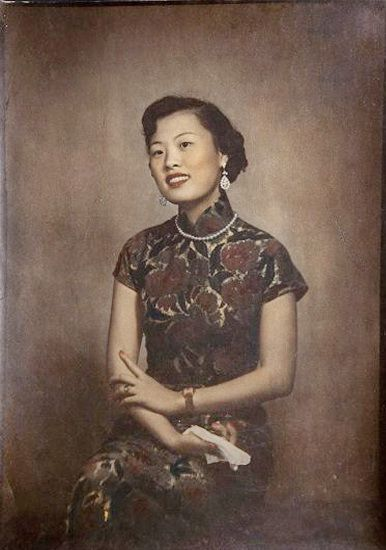
1950s (Mao era, People’s Republic of China) portrait by Sam Sanzetti. A lot of commercial “Republican era style” cheongsam you can buy on Taobao nowadays look extremely 1950s, to the point where if they were labeled 1950s they would be perfectly historically accurate, but they’re far fetched from the 1930s or 40s.
I literally don’t know why this is, it baffles me. If anyone has similar examples from other periods/places feel free to share.
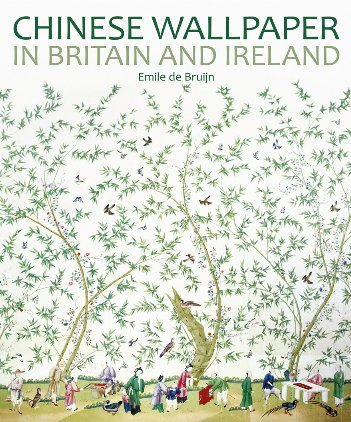
*I wrote this last year but completely forgot to post it. Enjoy the old stock :)
I’ve seen a lot of interesting images from this book on Pinterest so I decided to get the real thing, and I have to say I am extremely satisfied with it. This book is about Chinese made wallpapers from the Qing Dynasty (mostly 18th and early 19th centuries) that were exported to Europe and used as decoration in British and Irish homes. Although wallpapers are an interesting subject on their own, I will only be reviewing it only on the basis of how useful it is for fashion history research. This will be a short one.
Great images
Apparently I was not the only person who got this book for the pictures as the review at the back of the book suggests, and I fully understand why. This book contains high quality photos of Chinese wallpapers from the 18th and 19th centuries, in perfect resolution and colors. Even if you’re not interested in Chinese fashion, I would still recommend you to get this book because it also shows beautiful antique British and Irish interiors and chinoiserie wallpapers, and is just plain pleasant to look at.
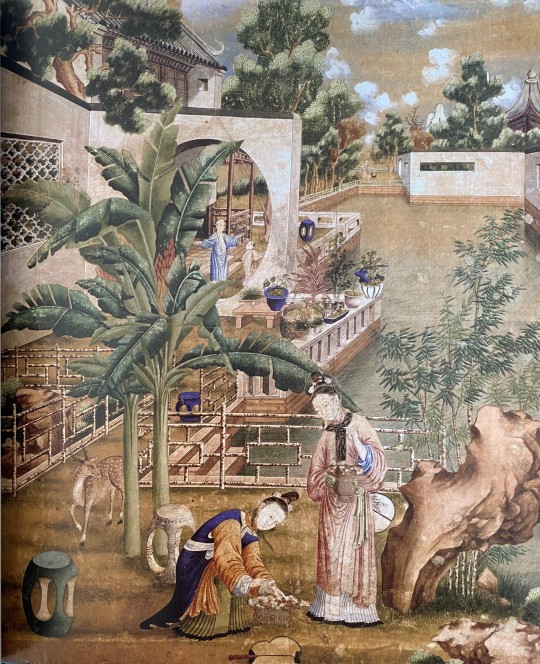
One of my favorites from the entire book, a full page spread with delicious details of a wallpaper depicting a Chinese garden using linear perspective. Even better that the ladies are clad in Qianlong era garments.
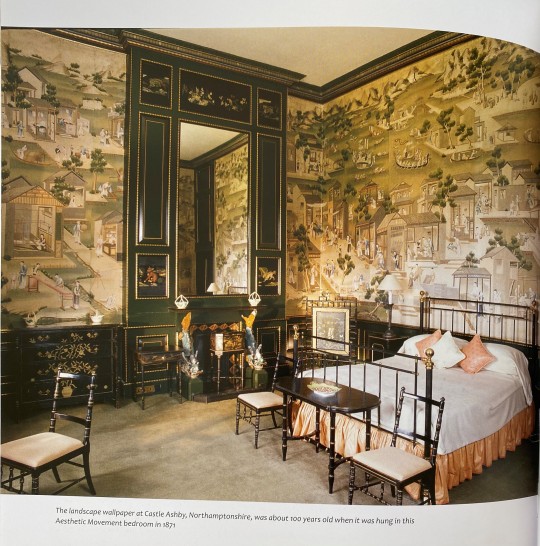
Photos of interiors are also immaculate.
The importance of commercial art
Commercial art like wallpapers, portraits and export paintings is very marginalized in the study of Chinese art, so I highly appreciate that this book sheds more light on a category that traditionally finds absolutely no favor with Chinese art historians. Because of commercialization and increased trade with Europe, popular artworks from this era that depicted life realistically often employed Western painting techniques at least to some extent, meaning they don’t look very Chinese and are often neglected by scholars; more stereotypically Chinese literati painting genres, such as landscape painting or 仕女画 shinvhua (idealized paintings of women) are definitely way more popular among art historians.
Literati painting seldom, if ever, depicted people’s clothing realistically. Costumes were meant to be excessively flowy, adhering to people’s imagination of deities and supernatural beings. Sometimes hints of contemporary fashion could be seen if you know what to look for, because the artist’s imagination had limits and they couldn’t just pull an outfit out of thin air. But still, literati paintings should never be used as resources for the study of fashion history, because the clothing shown had little to no connection to what was popular in real life. Commercial art, on the other hand, depicted real people with real fashion, but is seldom shown in museums or books on Chinese art history because it was considered vulgar and inferior by the literati upper class. In my opinion, commercial art is miles more interesting than literati painting, because literati art has changed relatively little over the course of Chinese history due to conservative Confucian morals, whereas commercial art was usually more reflective of their time and popular tastes. The only non literati Qing painter to ever receive mainstream attention was probably Castiglione, but he was also a court painter and didn’t belong in the commercial category. Even Lam Qua is niche. The commercial export paintings made by native middle class artists of the Guangzhou thirteen factories (十三行), who had more freedom and pioneered new art forms (like reverse glass painting), are rarely discussed.
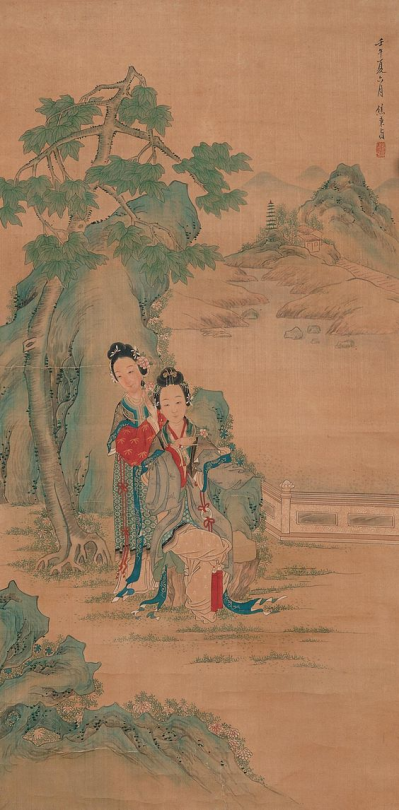
Literati painting attributed to 焦秉贞 Jiao Bingzhen (active 1689-1726). The costumes of the women, which are extremely stylized and historicist, follow rules of the genre established centuries ago and do not reflect actual fashion. Jiao could paint in the Western style as well, I’m just picking a shinv piece he did. This is the type of stereotypically Chinese art historians love to focus on.

FromChinese Wallpaper, likely made in the late Qianlong era (1770s-1790s). This kind of more down to earth art illustrating everyday life is a lot more rare to see, especially those where the artist attempts Western shading or perspective.
Because “Chinese art” for most people only encompasses literati painting, calligraphy, ceramics and other such stereotypical disciplines, seeing the relative lack of them in the Qing it’s easy to jump to the conclusion that art was not produced with the same rigor as in previous dynasties, which then leads to notions about the Qing being conservative and uncultured and such. No, art was abundant in the Qing, it’s just that the popular taste in art has changed so it was often made in a different medium (oil painting, print and indeed wallpapers) using a combination of Chinese and Western techniques. Scholarship on mediums like oil painting (China trade painting) and reverse glass painting has been virtually nonexistent until very recently; the first thorough monograph of reverse glass painting I’ve read is Thierry Audric’s 2020 Chinese Reverse Glass Painting 1720-1820. I really hope that as research on Qing export art accumulates, it would be able to finally integrate itself into the wider timeline of Chinese art history. So on this matter, thank you de Bruijn for making a whole book on a niche category of Chinese art.
Underrated era
Now with the context out of the way, I can talk about fashion. Although there is no mention of fashion in the text since that isn’t what this book is about, the images included are great for illustrating fashion in the early to mid Qing, which is not well represented in the study of Chinese fashion history at all. I’ve talked multiple times about 18th century erasure on this blog, and I think this book is a very good antidote to that. The bulk of the wallpapers featuring humans were from the Qianlong era (1735-96), a personal favorite era of mine, and there are also several that depict the Jiaqing era (1796-1820), which is even rarer.
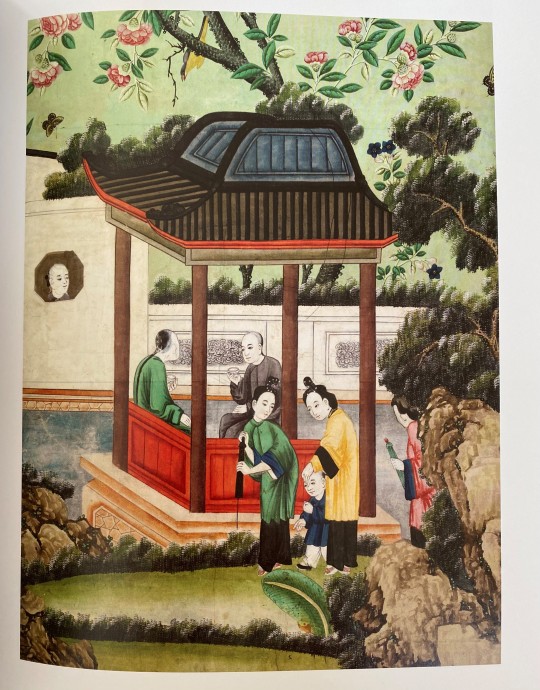
What seems to be Jiaqing era clothing. The unicolor robes with black binding paired with plain black pants or skirts have a very casual and pastoral look. The style is weirdly reminiscent of modern stereotypical “Republican era uniform” Halloween costumes, but way better.
Conclusion/rating
This is a short review because the main point is that this book has plenty of nice images of an underrated era. Without a doubt 9/10. One point off because it would be nicer if the wallpapers are dated, but that’s a minor qualm.
